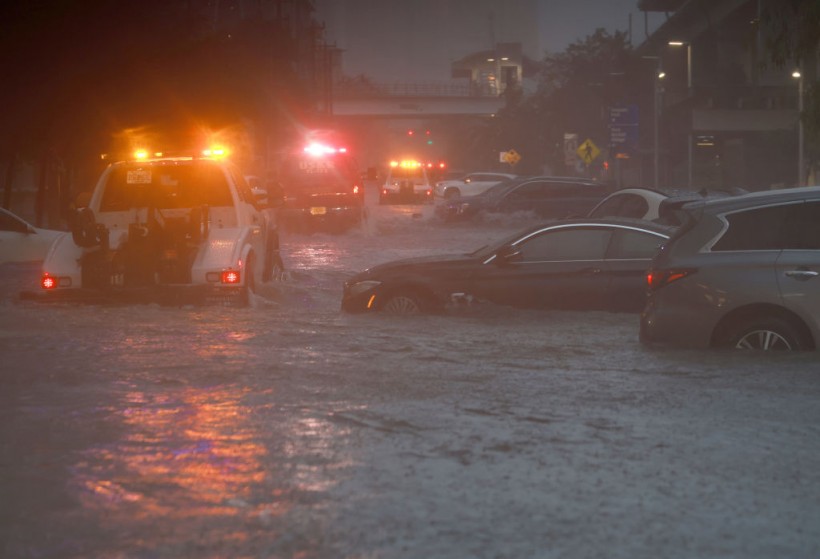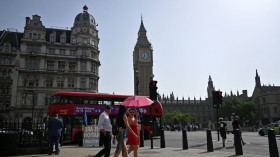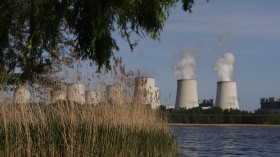The Windy City was slammed with an intense storm that unleashed strong winds, heavy rains, and the potential for a tornado during the same week when Chicago was also dealing with scorching heat. The National Weather Service decided to undertake damage surveys on Tuesday to determine whether or not a tornado struck.
Winds gusted to 84 miles per hour at Chicago O'Hare Airport, causing a slew of problems for employees and passengers. Early Monday evening, severe weather wreaked havoc on the airport, which decamped passengers to a tornado shelter and issued shelter-in-place instructions.
A short time later, the all-clear was given, although strong winds of up to 80 mph were detected blowing through Brookfield, La Grange Park, and Riverside. According to FlightAware, nearly 400 flights departing from O'Hare were delayed Monday due to the severe weather.
Ball Game After the Storm

Thousands of fans at Wigley Field for the Chicago Cubs game against the San Diego Padres on Monday evening had to flee for their lives as the tornado-warned storm approached the vicinity.
The game was able to go on after the storm passed. Some fans stayed to watch the game. A home team victory was delivered as Padres defeated the Cubs by three runs.
Three Missing, Zero Deaths
The tornado-warned intense storm that rumbled over Chicago on Monday night and into Tuesday morning was one of many storms across the Midwest, Ohio Valley, and mid-Atlantic.
Late Monday and early Tuesday, three separate lines of severe storms swept throughout the region, with wind gusts exceeding 80 mph. The highest gust was recorded in Fort Wayne, Indiana at 98 mph. The airport in Fort Wayne was damaged as a result of the severe weather.
According to The Associated Press, three people are missing in Milwaukee, Wisconsin, after being swept away in flood waters during Monday's storms. There have been no fatalities reported during the storm.
Storm Plus Power Outage
According to PowerOutage.us, over 615,000 electric customers had no power supply on Tuesday morning as a result of the storms, with Ohio accounting for more than half of the outages. The number of power outages had dropped below 500,000 by midday.
Over half of customers from Pike County in southern Ohio had no power supply power by late Monday afternoon. Cincinnati was one of the cities hit by the storms, with areas across the region looking bleak before the rain began on Monday.
With humidity and heat building over the region through midweek, long-term outages may become an issue. Heat advisories are in effect in the same areas where a large number of people are still without power.
AccuWeather Meteorologist Andrew Johnson-Levine explained that power outages are one of the most serious consequences of these storms, especially because of the heat that has gripped a large part of the country. On Wednesday, most of the affected areas are anticipated to see temperatures in the 90s, possibly even 100s, and the lack of air conditioning will make this even more dangerous.
After 4 p.m. In Franklin County, Ohio, where the AccuWeather RealFeel® reached 108 degrees F, over 74,000 customers were without power at 8:00 a.m. EDT Tuesday. About an hour later, the number of customers without power had risen to 113,000, possibly due to the heat straining the area's remaining power system. As of 4:52 a.m., over 242,000 customers in the state were still without power. According to PowerOutage.us, the outage began at 8:00 a.m. EDT on Wednesday.
According to a spokesperson for power provider AEP, over 100,000 customers in the area have to be taken off the power grid to prevent further damage. There is yet no estimate for restoration as of Tuesday evening.
The Storm Prediction Center received over 300 damaging wind reports as a result of the intense storm, nearly all of the reports were situated between Wisconsin and Virginia.
Related article: American Monsoon Started With a Particularly Strong Thunderstorm
© 2024 NatureWorldNews.com All rights reserved. Do not reproduce without permission.





